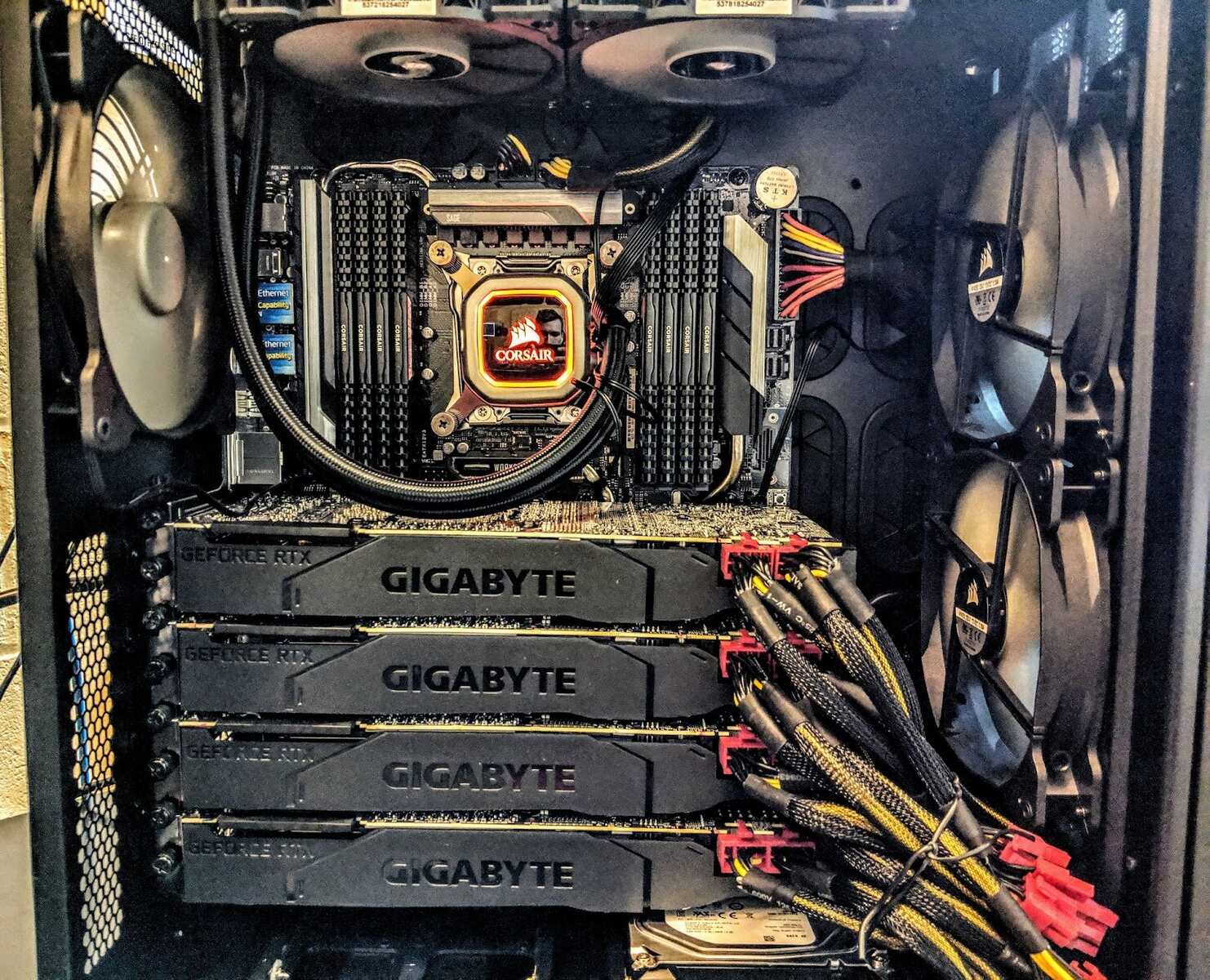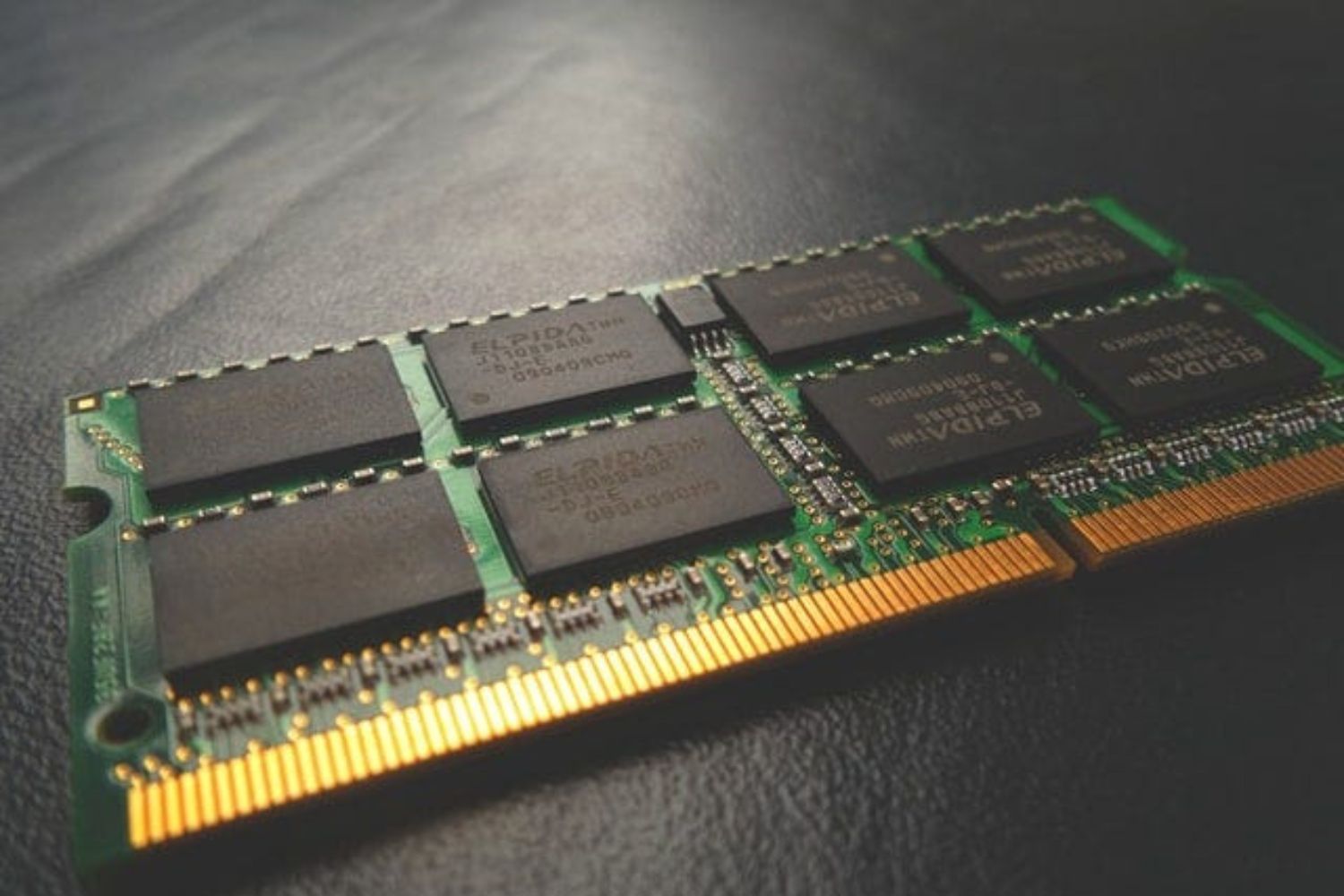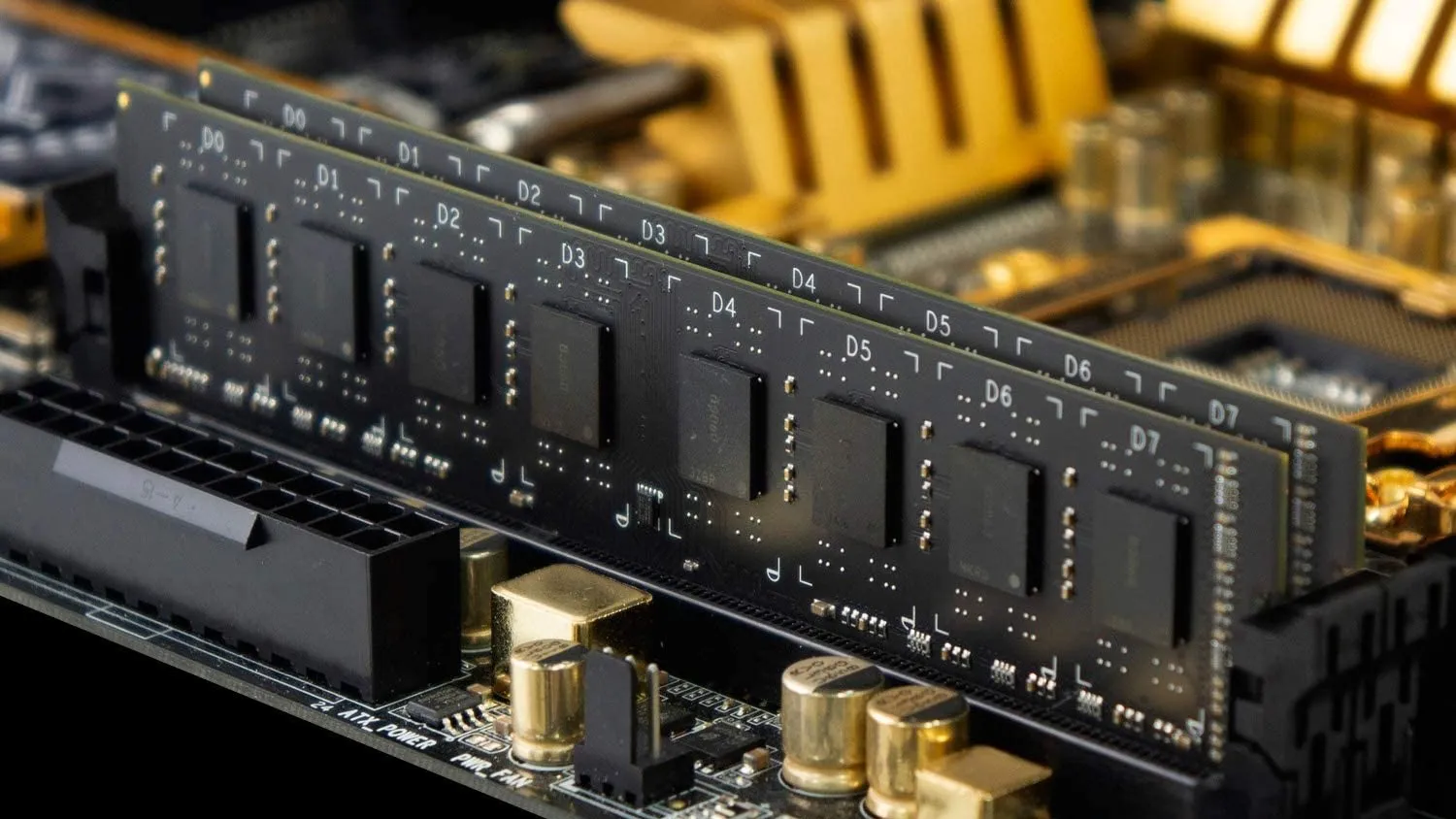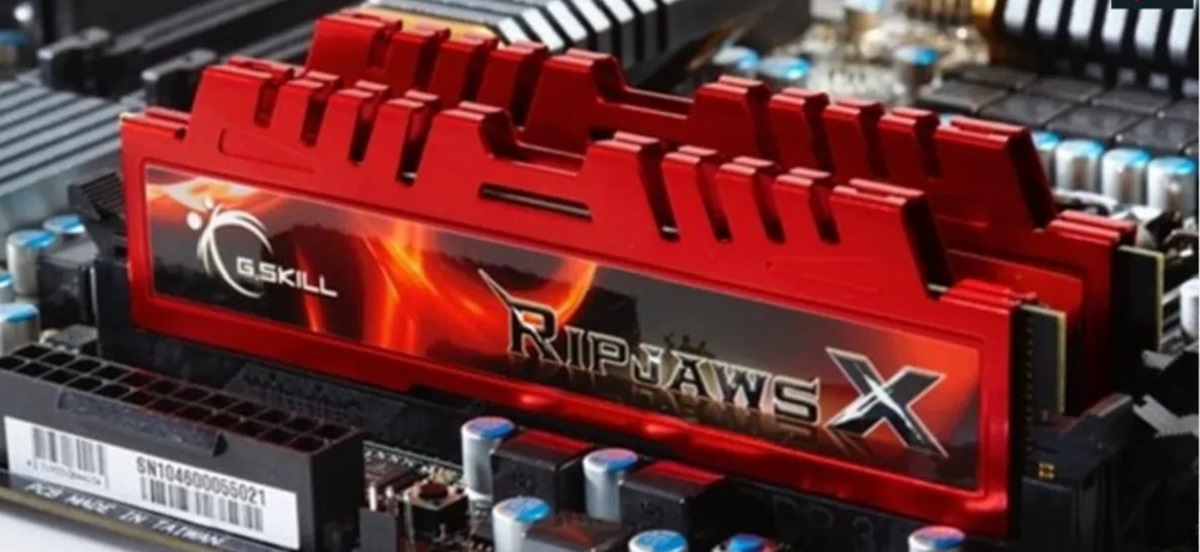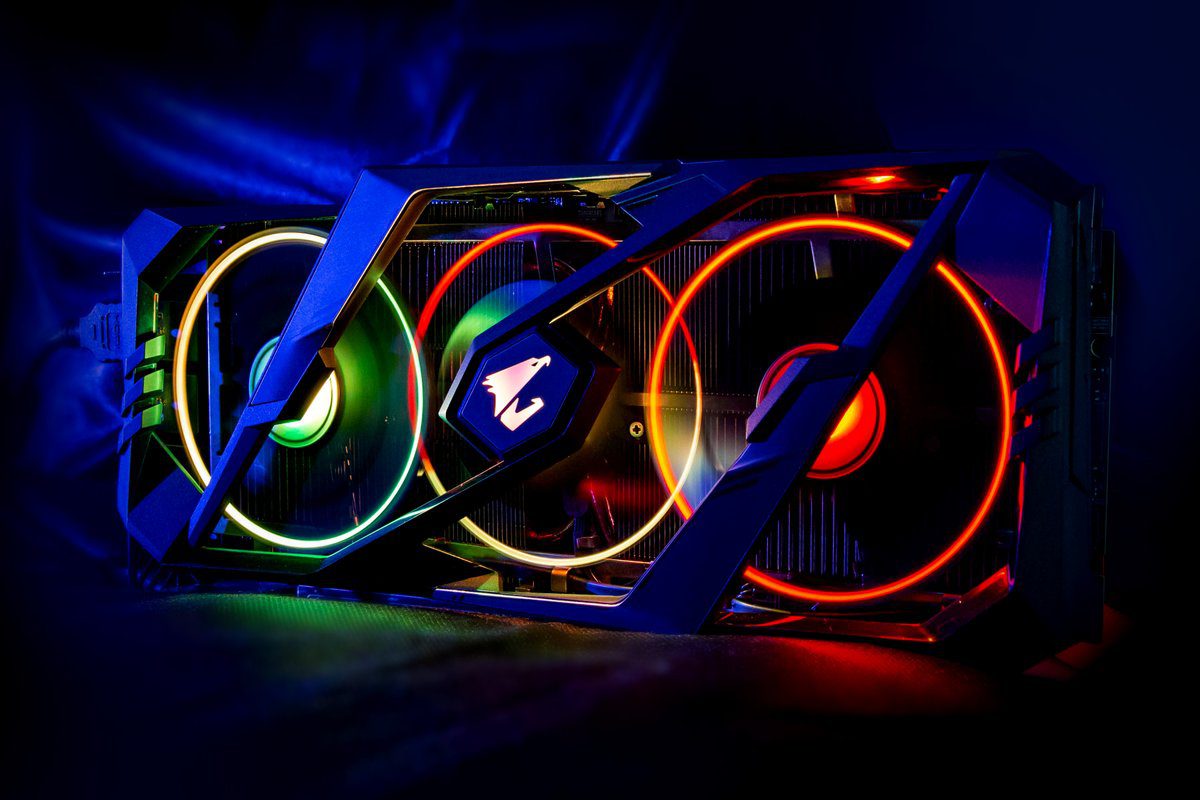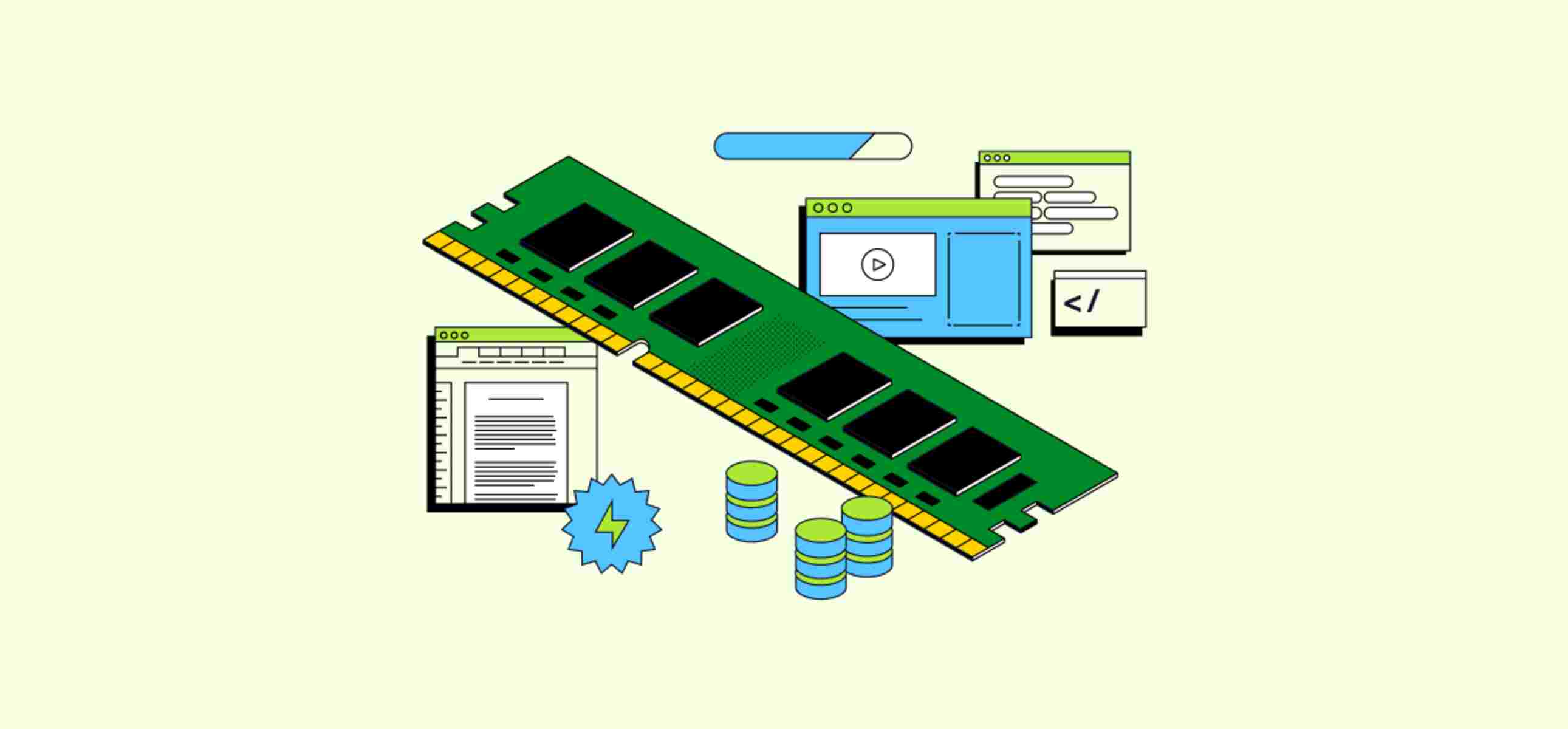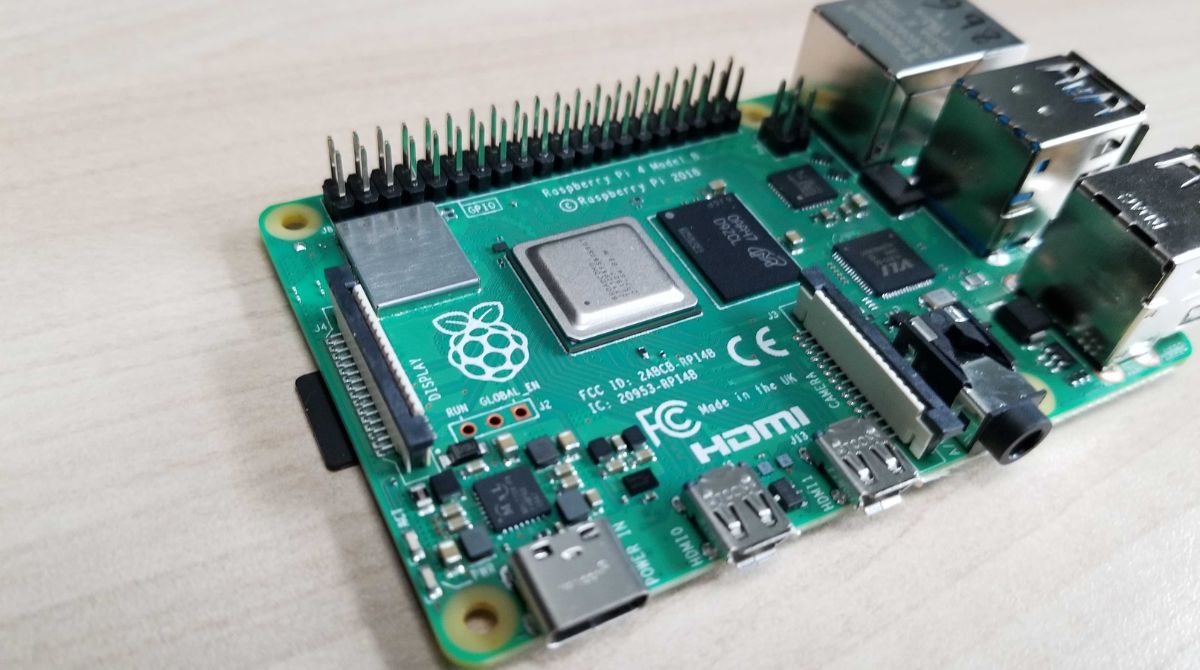Introduction
Machine learning has revolutionized various industries, from healthcare to finance and beyond. It enables computers to learn from data and make accurate predictions or decisions without being explicitly programmed. However, machine learning algorithms can be computationally intensive, requiring significant computing resources. One crucial component for running machine learning models effectively is Random Access Memory (RAM).
RAM, also known as computer memory, is a temporary storage space that holds data and instructions that the CPU (Central Processing Unit) needs to access quickly. It is faster than secondary storage devices like hard drives and plays a vital role in the performance and efficiency of machine learning algorithms.
When it comes to machine learning, RAM is essential because it stores the data and parameters of the model during training and inference. The size of the dataset, complexity of the model, and the number of features being processed all contribute to the RAM requirements. Having an adequate amount of RAM ensures that the machine learning algorithm can efficiently handle and manipulate the data, resulting in faster training times and more accurate predictions.
In this article, we will explore the factors to consider when determining RAM requirements for machine learning projects, discuss the RAM requirements for popular machine learning frameworks, provide tips for optimizing RAM usage, and address common pitfalls and misconceptions. By understanding the importance of RAM in machine learning and learning how to effectively manage it, you can ensure the smooth execution of your projects and achieve optimal results.
What is RAM and why is it important in machine learning?
Random Access Memory (RAM) is a crucial component of a computer’s hardware architecture. It is a volatile type of memory that allows the CPU to store and quickly access data that is actively being used by programs and applications. In the context of machine learning, RAM serves as a temporary working space for storing the data, model parameters, and intermediate computations during the training and inference phases.
RAM plays a pivotal role in machine learning for several reasons. Firstly, it enables efficient data handling. Machine learning algorithms often work with large datasets that cannot fit into the limited cache memory of the CPU. RAM provides the necessary space to load and process these datasets, facilitating faster operations and reducing disk I/O bottlenecks.
Secondly, RAM allows for smooth model training and inference. When training a machine learning model, various mathematical operations are performed on the data, iteratively updating the model’s parameters. These computations require substantial memory for storing intermediate values, gradients, and activation functions. With sufficient RAM, these calculations can be handled seamlessly, leading to faster model convergence and improved accuracy.
Thirdly, RAM significantly contributes to the overall performance and speed of machine learning projects. As the size and complexity of the dataset and model increase, so does the need for more RAM. Insufficient RAM can result in frequent swapping of data between RAM and slower storage devices, such as hard drives or solid-state drives (SSDs), causing delays and hampering the efficiency of the learning process.
Lastly, RAM plays a critical role in real-time applications and deployment scenarios. In applications where machine learning models are deployed to make predictions or decisions in real-time, having enough RAM ensures fast and responsive performance. With adequate RAM, the model’s parameters and inference computations can be efficiently stored, allowing for quick predictions without latency.
Overall, RAM is an indispensable resource for machine learning tasks. Its importance lies in providing the necessary space and processing power to handle large datasets, facilitate complex computations, improve training times, and enable smoother model deployment. By understanding the significance of RAM in machine learning projects, developers and data scientists can make informed decisions regarding the hardware requirements and optimize their systems for maximum performance.
Factors to consider when determining RAM requirements
When determining the RAM requirements for a machine learning project, several factors need to be taken into consideration. The amount of RAM needed can vary depending on the nature of the project, the size and complexity of the dataset, and the machine learning algorithms or frameworks being used. Here are some key factors to consider:
Data size: The size of the dataset is one of the primary factors influencing RAM requirements. Larger datasets require more memory to load and process efficiently. High-resolution images, videos, or text corpora with millions of samples can quickly consume significant amounts of RAM, so it is important to estimate the dataset size and account for it in the RAM calculation.
Model complexity: The complexity of the machine learning model is another crucial factor. Models with a large number of parameters, such as deep neural networks, can demand substantial memory to store these parameters and perform forward and backward computations during training. The more complex the model, the more RAM it will typically require.
Feature dimensionality: If the dataset has a high number of features or dimensions, additional memory is needed to store and manipulate these features. Models that operate on high-dimensional data, such as image or text data, may require more RAM to handle the increased feature space efficiently.
Batch size: Batch training is a common practice in machine learning, where data is divided into smaller subsets or batches for training. The batch size determines how many samples are processed at once, and larger batch sizes generally require more memory to store the intermediate computations and gradients. Increasing the batch size can improve training speed, but it also increases the RAM requirements.
Algorithm or framework: Different machine learning algorithms or frameworks have varying RAM requirements. For example, deep learning frameworks like TensorFlow or PyTorch tend to be memory-intensive due to the nature of neural networks. It is important to consider the memory demands of the specific algorithms or frameworks being used and allocate sufficient RAM accordingly.
Parallel processing: If your machine learning implementation involves parallel processing using multiple GPUs or distributed systems, additional RAM may be necessary to support the increased computational workload and memory requirements.
Operating system and other processes: The operating system and any other processes running simultaneously on the machine also consume a certain amount of RAM. It is important to consider these factors and ensure that enough memory is available for the machine learning tasks while leaving room for the operating system to function smoothly.
By carefully considering these factors and estimating the memory requirements based on the specific characteristics of the dataset, model, algorithm, and system setup, you can determine the appropriate amount of RAM needed for your machine learning project. Allocating sufficient RAM ensures smooth execution and optimal performance, minimizing the risk of memory-related issues and maximizing the efficiency of your computations.
RAM requirements for popular machine learning frameworks
Popular machine learning frameworks have varying RAM requirements based on their design, functionality, and the complexity of the models they support. It is important to consider these requirements when choosing a framework for your machine learning projects. Here are the RAM requirements for some of the most widely used frameworks:
TensorFlow: TensorFlow is a powerful open-source framework developed by Google for building and training machine learning models. Its memory requirements depend on the size of the model and the complexity of the computational graph. Large-scale deep learning models, such as convolutional neural networks (CNNs) or recurrent neural networks (RNNs), can require several gigabytes or even terabytes of RAM for training complex models and processing large datasets.
PyTorch: PyTorch, another popular open-source framework, is known for its dynamic computational graph and flexibility. The RAM requirements for PyTorch are similar to TensorFlow, as both frameworks support deep learning models. The memory usage depends on the size of the model, the number of parameters, and the size of the input data. Highly complex models or large datasets may require substantial RAM to train and evaluate efficiently.
Scikit-learn: Scikit-learn is a widely used Python library for machine learning tasks. While scikit-learn does not have as high RAM requirements as deep learning frameworks like TensorFlow or PyTorch, the memory usage can still be significant, especially when working with large datasets. The amount of RAM needed depends on the size of the feature matrix or input data as well as the complexity of the algorithms used.
XGBoost: XGBoost is a popular gradient boosting library known for its efficiency and scalability. It is often used for solving classification and regression problems. XGBoost generally requires less RAM compared to deep learning frameworks, but the memory usage can still grow with larger datasets and more complex models. The amount of RAM needed depends on factors such as the number of trees in the model and the number of features being considered.
Keras: Keras is an easy-to-use and versatile deep learning library that can be used on top of TensorFlow or other backend frameworks. The RAM requirements for Keras are similar to TensorFlow since Keras utilizes TensorFlow as its backend. The memory usage depends on the size and complexity of the deep learning model being trained or evaluated.
It is important to note that the RAM requirements mentioned above are approximate figures and can vary depending on the specific implementation, hardware, and dataset size. It is always advisable to monitor the memory usage during training and inference and make adjustments accordingly to ensure efficient utilization of resources.
By understanding the RAM requirements of popular machine learning frameworks, you can make informed decisions about the hardware and infrastructure needed for your projects. Allocating sufficient RAM based on the requirements of the chosen framework will help ensure smooth execution and optimal performance.
How to calculate the required amount of RAM for your machine learning projects
Accurately determining the required amount of RAM for your machine learning projects is essential to ensure optimal performance and prevent memory-related issues. Here are some steps to calculate the estimated RAM requirements:
Step 1: Assess the dataset: Start by evaluating the size and complexity of your dataset. Determine the number of samples, the number of features, and the size of each feature. Consider whether any preprocessing or feature engineering steps will increase the size of the dataset.
Step 2: Determine the model architecture: Understand the structure and complexity of the machine learning model you plan to use. Consider the number of layers, nodes, and parameters in the model. Complex models with a high number of parameters will require more memory.
Step 3: Estimate intermediate computations: Consider the intermediate computations and memory requirements during the training or inference process. This includes intermediate values, gradients, and activation functions. Deep learning models, for example, may require additional memory for storing and manipulating these intermediate computations.
Step 4: Take into account batch size: If you plan to use batch training, determine the size of the batches that your model can handle efficiently. Larger batch sizes will require more memory. Consider the trade-off between training speed and memory requirements when selecting the batch size.
Step 5: Consider the framework or library: Different machine learning frameworks or libraries have varying memory requirements. Research the memory usage of the specific framework you are using and consider it when estimating the RAM requirements.
Step 6: Account for other processes: Consider the memory requirements of the operating system and any other processes running simultaneously on your machine. Allocate enough memory to meet the needs of the machine learning tasks while leaving room for the operating system to function smoothly.
Step 7: Sum up the RAM requirements: Combine the estimates from the previous steps to calculate the total RAM needed for your machine learning project. Take into account the dataset size, model complexity, intermediate computations, batch size, framework requirements, and other processes.
While these steps provide a general guideline for estimating RAM requirements, it is important to remember that the estimated RAM usage may vary based on the specific implementation, hardware capabilities, and dataset characteristics. Monitoring the memory usage during training or inference and making adjustments as needed can help ensure efficient utilization of resources.
By accurately calculating the required amount of RAM, you can allocate sufficient resources to your machine learning projects, allowing for smooth execution and optimal performance.
Tips for optimizing RAM usage in machine learning
Efficiently managing RAM usage is crucial for smooth execution and optimal performance in machine learning projects. Here are some tips to optimize RAM usage:
1. Data preprocessing and feature scaling: Reduce the memory footprint by preprocessing the data and scaling the features. Normalize or standardize the data to a smaller range to reduce memory consumption without impacting model performance.
2. Use data generators or iterators: Instead of loading the entire dataset into memory, consider using data generators or iterators, which load a batch of data at a time, minimizing RAM usage. This approach is particularly useful when working with large datasets that do not fit entirely in memory.
3. Memory-efficient data structures: Choose appropriate data structures that minimize memory usage. For example, use sparse matrices or compressed representations for sparse datasets, reducing memory requirements compared to dense representations.
4. Batch size optimization: Experiment with different batch sizes during training. Larger batch sizes may increase RAM usage, but they can also improve training speed. Find the optimal batch size that balances memory usage and computational efficiency.
5. Model optimization: Reduce the memory requirements of the model by optimizing the architecture. Consider decreasing the number of layers, nodes, or parameters while maintaining acceptable model performance. Techniques such as model pruning or using low-rank factorizations can help reduce memory usage.
6. Memory management libraries: Utilize memory management libraries specific to your machine learning framework or programming language. These libraries can help optimize memory allocation, reduce memory fragmentation, and efficiently manage memory usage during training or inference.
7. Model checkpointing: Save model checkpoints during training to disk instead of storing them in memory. This allows you to free up memory while still being able to resume training from the last saved checkpoint if needed.
8. Garbage collection: Keep track of memory usage and periodically invoke garbage collection to release memory that is no longer in use. Proper memory management and timely garbage collection can help prevent memory leaks and optimize RAM usage.
9. Increase hardware resources: If your machine learning tasks consistently struggle with limited RAM, consider upgrading your hardware. Adding more RAM or using high-performance GPUs with dedicated memory can significantly improve performance and handle larger datasets.
10. Profile and monitor memory usage: Continuously monitor and profile your machine learning code to identify potential memory bottlenecks. Use tools and libraries to track memory consumption and identify areas where optimizations can be made.
Implementing these optimization techniques can help you make the most efficient use of available RAM resources and enhance the performance of your machine learning projects. By reducing memory usage and optimizing RAM management, you can achieve faster training times, handle larger datasets, and ensure smooth execution of your models.
Common pitfalls and misconceptions about RAM in machine learning
RAM plays a critical role in machine learning, but there are common pitfalls and misconceptions that can lead to inefficiencies or unexpected issues. Understanding these pitfalls can help you avoid potential problems and make informed decisions about RAM utilization in your machine learning projects. Here are some common pitfalls and misconceptions:
1. Overestimating RAM requirements: One common mistake is overestimating the amount of RAM needed for a machine learning project. While it is essential to allocate sufficient memory, excessive allocation can lead to unnecessary expenses. It is crucial to accurately estimate the RAM requirements based on the specific dataset, model, and framework being used.
2. Neglecting data preprocessing: Insufficient attention to data preprocessing can result in unnecessarily high RAM usage. Applying appropriate preprocessing steps, such as feature scaling or transformation, can significantly reduce the memory footprint of the dataset without sacrificing model performance.
3. Ignoring memory leaks: Memory leaks can occur when allocated memory is not properly released after use. Ignoring memory leaks can lead to substantial memory wastage, impacting performance and potentially causing crashes. It is important to actively monitor and manage memory usage, periodically invoking garbage collection, and ensuring proper deallocation of memory resources.
4. Failing to optimize batch size: The batch size used during training can impact both memory usage and training efficiency. Using an excessively large batch size may overwhelm the available memory, while a too-small batch size can lead to suboptimal convergence and training speed. Experimentation and optimization of the batch size are crucial to strike the right balance.
5. Underestimating RAM for parallel processing: When working with distributed systems or parallel processing using GPUs, each device requires its own separate memory allocation. Underestimating the RAM needed for parallel processing can lead to resource contention, slower execution, or even system crashes. Allocating sufficient memory for each device is crucial for efficient parallel processing.
6. Assuming more RAM will always solve performance issues: While having more RAM can improve performance, it is not a solution to all performance issues. Bottlenecks can occur due to other factors such as CPU or GPU limitations, inefficient algorithms, or disk I/O. It is crucial to identify the root cause of the performance issue and implement appropriate optimizations rather than relying solely on increasing RAM.
7. Neglecting hardware considerations: RAM requirements are closely tied to hardware capabilities. Running machine learning models on hardware with limited RAM can lead to significant performance issues or even system crashes. Considering hardware limitations and upgrading as necessary is essential to ensure smooth execution of machine learning tasks.
8. Not monitoring RAM usage: Failure to monitor RAM usage during the machine learning process can cause unexpected memory issues. Regularly tracking memory utilization, profiling memory usage, and identifying potential memory bottlenecks can help proactively address memory-related problems.
By being aware of these pitfalls and misconceptions, you can make informed decisions about RAM allocation and utilization in your machine learning projects. Proper estimation of RAM requirements, effective memory management, and optimization techniques can help prevent performance issues and ensure efficient utilization of resources.
Future trends and predictions regarding RAM requirements in machine learning
The field of machine learning continues to advance rapidly, with new algorithms, models, and frameworks being developed. As machine learning techniques become more sophisticated and datasets grow in size and complexity, it is expected that RAM requirements will continue to evolve. Here are some future trends and predictions regarding RAM requirements in machine learning:
1. Increased demand for larger memory capacities: As machine learning models become more complex and datasets grow in size, there will be an increased demand for larger memory capacities. Deep learning algorithms, in particular, often require substantial memory to store and process large neural network architectures and voluminous data.
2. Continued growth of deep learning: Deep learning has shown remarkable success in a wide range of applications, and its popularity is expected to continue growing in the future. Deep learning models typically require more memory due to their layered structure and numerous parameters. As deep learning expands into new domains, the demand for larger RAM capacities will likely increase.
3. Advancements in hardware technologies: Hardware technologies, such as high-capacity RAM modules and faster memory access, are expected to advance as well. This will enable machines to handle larger datasets and more memory-intensive models, providing the necessary infrastructure to meet the evolving RAM requirements of machine learning.
4. Optimization techniques for memory usage: Researchers and developers will continue to focus on optimizing memory usage in machine learning algorithms. This includes developing more memory-efficient models, compression techniques, and algorithms that reduce memory footprint without sacrificing performance. These optimization techniques will help alleviate the strain on RAM requirements and allow for more efficient memory utilization.
5. Cloud computing and distributed systems: Cloud computing platforms and distributed systems are becoming increasingly popular for machine learning tasks. These platforms can offer scalable resources, including RAM, to meet the growing demands of machine learning projects. With cloud-based solutions, users have the flexibility to allocate and expand RAM resources as needed, making it easier to handle large-scale machine learning workloads.
6. Edge computing and resource-constrained environments: With the proliferation of Internet of Things (IoT) devices and the need for real-time and low-latency inference, machine learning is expanding into resource-constrained environments. Edge computing enables machine learning to be performed directly on the device, reducing the need for extensive RAM allocation. Lightweight models and optimized memory management techniques will be crucial in these scenarios.
7. Integration of hardware and software optimizations: The future will see a greater integration of hardware and software optimizations to enhance RAM requirements in machine learning. This includes developing specialized hardware accelerators, such as tensor processing units (TPUs), that are specifically designed for efficient machine learning computations, reducing the demand for high RAM capacities.
8. Advances in virtual memory and memory pooling techniques: As RAM requirements continue to grow, virtual memory techniques and memory pooling will play an important role in managing memory efficiently. These techniques dynamically allocate and manage memory resources, allowing data to be stored and accessed from secondary storage devices when RAM limitations are reached, providing more flexibility in handling large-scale datasets.
As machine learning continues to evolve, RAM requirements will remain a critical consideration. By staying abreast of the latest research and advancements in RAM optimization techniques and hardware, developers and data scientists can effectively manage and fulfill the growing RAM demands of machine learning tasks.
Conclusion
RAM is a vital component in machine learning, playing a crucial role in handling large datasets, complex models, and memory-intensive computations. Understanding the factors that influence RAM requirements and employing strategies to optimize RAM usage are essential for achieving efficient and high-performing machine learning projects.
When determining the RAM requirements, considering the dataset size, model complexity, batch size, and the specific framework being used can help estimate the needed memory. Additionally, optimizing RAM usage by preprocessing and scaling data, utilizing memory-efficient data structures, and monitoring memory consumption can mitigate unnecessary memory consumption.
It is important to be aware of common pitfalls and misconceptions related to RAM in machine learning, such as overestimating requirements or neglecting memory leaks. By avoiding these pitfalls and employing best practices, developers can ensure efficient RAM utilization and prevent performance issues.
Looking towards the future, advancements in hardware technologies, the proliferation of cloud computing and distributed systems, and optimization techniques will continue to shape RAM requirements in machine learning. As deep learning expands and new domains adopt machine learning, the demand for larger memory capacities will likely increase. However, advancements in optimization techniques, the integration of hardware and software optimizations, and the development of memory-efficient algorithms will help address these challenges.
In conclusion, RAM plays a vital role in the success of machine learning projects. By accurately estimating RAM requirements, optimizing memory usage, staying informed about advancements in hardware and optimization techniques, and continuously monitoring memory consumption, developers can ensure efficient and effective utilization of RAM resources in their machine learning endeavors.







